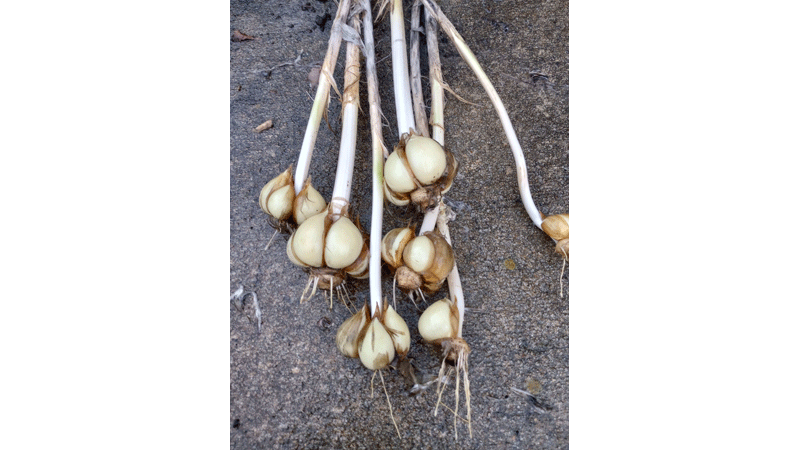Garlic for the home garden
Published 9:01 pm Wednesday, September 13, 2023

- Garlic is relatively easy to grow in our area and in most parts of the country. It is versatile as a culinary and medicinal ingredient. (Photo by Mark Carroll)
|
Getting your Trinity Audio player ready...
|
By Mark Carroll
Western Tidewater Master Gardener
The inspiration for this article came from a plant clinic question which at the time I was not able to answer. Now, I have an answer but first, let’s discuss the basics of growing garlic.
Garlic is relatively easy to grow in our area and in most parts of the country. It is versatile as a culinary and medicinal ingredient. If that doesn’t get you growing it, it is a fantastic friend to most gardeners. Plants fight for survival by producing defenses against insects, adverse bacteria and fungi. The natural protective chemicals in Allium sativum (Garlic) produce the aroma and flavor we all love, but insects do not. In fact, the smell in one source I read, may be so strong to insects that it interferes with their natural reproduction processes. So, by interplanting garlic we can provide “best case” a natural insecticide and “worst case” a strong deterrent to insects. This can and has been done in both vegetables and flowers including roses which seem to benefit from some anti-fungal properties of the garlic.
There are two types of garlic; hardneck and softneck. Hardneck garlic is more tolerant of cold weather, while softneck garlic is more tolerant of hot weather. Plant garlic in the fall, 6-8 weeks before the first frost. This gives the plants time to develop roots before the ground freezes.
Water the garlic plants regularly, but don’t overwater. Garlic plants need about 1 inch of water per week. However, don’t overwater, as this can lead to root rot.
Harvest the garlic when the leaves start to turn yellow. The leaves will start to turn yellow when the garlic is ready to harvest. Once the leaves have turned yellow, dig up the bulbs and let them dry in a cool, shady place.
Here are some additional tips that you may find helpful: For larger bulbs, cut off any flower stalks that appear. Flower stalks will divert energy away from the bulb, resulting in a smaller harvest. Mulch around the garlic plants to help retain moisture and suppress weeds. If you notice your garlic sprouting in the fridge, you can simply plant them pointy side up. Also, if you dig them up instead of pulling you will retain the protective coating necessary for storage.
This publication provides general information on growing onions, garlic, and shallots in Virginia. It covers topics such as planting, soil preparation, fertilization, pest control, and harvesting. https://www.pubs.ext.vt.edu/426/426-411/426-411.html
So, the long-awaited answer to, Why don’t my garlic plants have bulbs? They most likely were harvested too early. In fact, this happened to me. I do not always track where I plant different things, so in May when I pulled up a garlic plant that looked mature, it was straight with little to no bulb and the neck was so wide, I was convinced mine were healthy Leeks. They had a mild flavor and did not taste very garlicy, however, as we enter August the neck has thinned a lot and bulbs have formed as shown above. Sometimes plants do not look the same when mature as they did during their growth.





